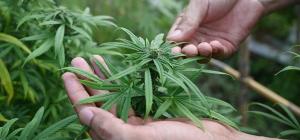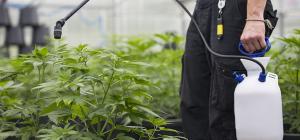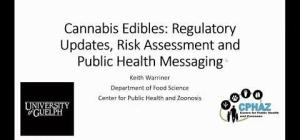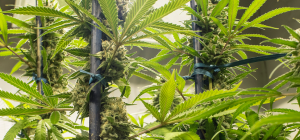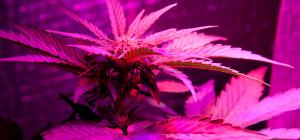
Lowering workplace and community risks through proactive engagement with the cannabis industry

Since legalization in 2019, the cannabis industry has rapidly developed new cultivation, processing, extraction, and retail facilities to serve the Canadian market. Although the public is often concerned over cannabis odour impacts, cannabis extraction and processing facilities may pose additional hazards, such as fires and explosions. In the US and other nations, fires and explosions in legal cannabis facilities have led to costly property damage and severe injuries. The use of solvents in cannabis processing also presents risks of intoxication, poisoning, and asphyxiation, both to workers as well as others entering the space, such as firefighters and health and safety inspectors. Thus, although cannabis cultivation and processing may pose specific occupational health and safety risks, these risks may also extend beyond employees. And because the industry remains relatively new, proactive occupational health and safety engagement with industry is necessary to assess novel risks and identify the appropriate means to address them.
This blog describes the results of a recent WorkSafeBC project involving cannabis producers in British Columbia. The blog provides a rapid overview of the hazards observed in cannabis processing and extraction facilities, and discusses measures that can be put in place to reduce the risks. This information will be of interest not only to the cannabis industry, but also members of the public living or working near cannabis facilities, first responders, and inspectors called on to conduct inspections and investigate complaints.
B.C.’s cannabis industry keeps growing
Creating healthy and safe workplaces is essential for this growing industry. As of April 2022, there were 213 commercial cannabis production license holders in B.C., up from 29 in October 2018. An estimated 53,000 people are working in BC’s cannabis production industry.
Employers are responsible for identifying hazards that can put workers at risk, and for implementing strategies that can help prevent worker injury and illness. Since the cannabis industry is still relatively new, employers may need additional support from occupational and environmental health professionals in identifying and addressing those risks.
Inspecting B.C.'s cannabis production operations
In early 2021, WorkSafeBC’s Risk Analysis Unit (RAU) reached out to cannabis production employers throughout B.C. The RAU visited both large, established producers and newer, smaller producers. We found that some of the large producers had already invested a significant amount of money on equipment, but that equipment design was not necessarily safe. In the case of smaller operations, some employers were either unaware of safety controls or intended to continue operating as they did pre-legalization, at which point health and safety were often not top priority.
The RAU found that many employers needed better training regarding the use of pressurized vessels for cannabis extraction. Many workers use pressurized equipment daily. If there is an accidental pressure release, these workers face a high risk of injury or death from the resulting pressure blast.
Unfortunately, the RAU found a number of pressurized vessels that were not registered with Technical Safety BC, as required. We also saw a significant amount of cannabis extraction equipment in use that does not meet the relevant standards from the Canadian Standards Association (CSA) or other bodies. Please see Dangers of extracting cannabis using equipment at high pressure.
Health and safety hazards in cannabis production
Based on our review of cannabis facilities, the RAU wants everyone in the industry to be aware of these hazards that are emerging, catastrophic, invisible, and/or can cause slow-acting harm:
- CO2 — Used as a solvent, or under pressure during the extraction process, exposure can cause asphyxiation or explosion.
- Cryogenics and refrigerants — These chemicals are used to freeze or refrigerate the cannabis plant material, solvents, or extracted products. These materials can be found throughout the cannabis processing process, and exposure can cause asphyxiation.
- Ethanol — Used as a solvent during cannabis extraction and refinement stages, ethanol can cause fire, explosion, poisoning, and intoxication.
- Particulate matter — Generated during milling in the preparation stage, exposure to plant-derived particulate matter can cause respiratory disease and allergic sensitization.
- Pressurized systems — These systems can cause explosions. Pressurized systems are mainly in the extraction stage. However, some lower pressure and vacuum systems can be used during refinement.
- Propane and butane — These can cause fires and explosions, and exposure can cause poisoning and intoxication. Both propane and butane are used as solvents during extraction, and residual solvent can be released from products during the refinement stages.
Correcting unsafe conditions
The risk management process starts by identifying all the workplace hazards, such as the ones listed above. The next step is to complete a risk assessment and correct the unsafe conditions. There's a certain order that needs to be followed when looking at how to reduce risk. It's called the hierarchy of controls.
- Elimination of the hazard completely is always the first choice. This includes substitution of a material or process with something less hazardous. When considering these options, employers need to consider:
- whether there are safer ways to perform the task.
- whether a less harmful process or product can be used instead.
- Engineering controls are the second choice. This includes physical changes to the workplace, such as installing ventilation and monitoring systems.
- Administrative controls are the next level. These include safe work procedures and exposure control plans.
- Personal protective equipment (PPE), such as protective eyewear and gloves, is the last level of control to protect workers. Ideally, PPE is used in combination with other, more effective control measures.
Controls for cannabis production safety
Based on our review, there are a number of controls that can be used to improve safety:
- Local exhaust ventilation and emergency ventilation
- Monitors and alarm systems for airborne contaminants
- Fire suppression and containment systems
- Pressure-relief devices pipped to the outside of the building
- Emergency shutdown procedures (rooms and equipment)
- Emergency washing facilities
- Safeguarding and lockout
Summary
As with any industry, cannabis processing and extraction poses certain risks to workers and, in the case of fires or explosions, may pose risks to those beyond the walls of the business itself. In some ways, the newly legalized cannabis industry is playing “catch up” to ensure that novel, unfamiliar processes can be carried out in a safe manner. Respectful and proactive engagement with industry is critical to identify any unsafe processes or equipment and to identify ways to mitigate those risks. Further engagement with this emerging industry will help to create safer conditions for workers, allied professionals like first responders and health and safety inspectors, and surrounding neighbourhoods.
For more information, visit worksafebc.com for these and other helpful resources:
- Cannabis resources for environmental health practitioners
- WorkSafeBC’s Health and safety in cannabis cultivation
- WorkSafeBC's Dangers of extracting cannabis using equipment at high pressure
- WorkSafeBC’s Emerging risks
- WorkSafeBC's Ask an officer: Managing risks in cannabis processing
Environmental health professionals, workers, employers, and the general public can call the WorkSafeBC Prevention Information Line to discuss any workplace health and safety concerns: 1.888.621.7233.
Authors
Kimiko Banati is an occupational hygiene officer in WorkSafeBC’s Risk Analysis Unit (RAU). The RAU assess emerging risks and risks that can be catastrophic and/or not readily noticed. Kimiko’s work with the cannabis cultivation and processing industry includes providing employers with the knowledge to identify hazards in their workplaces and to implement effective, reliable, and sustainable controls to protect workers.
Angela Eykelbosh is an EH and KT Scientist at NCCEH whose areas of interest include environmental public health emergency response and the public health impacts of cannabis legalization.

